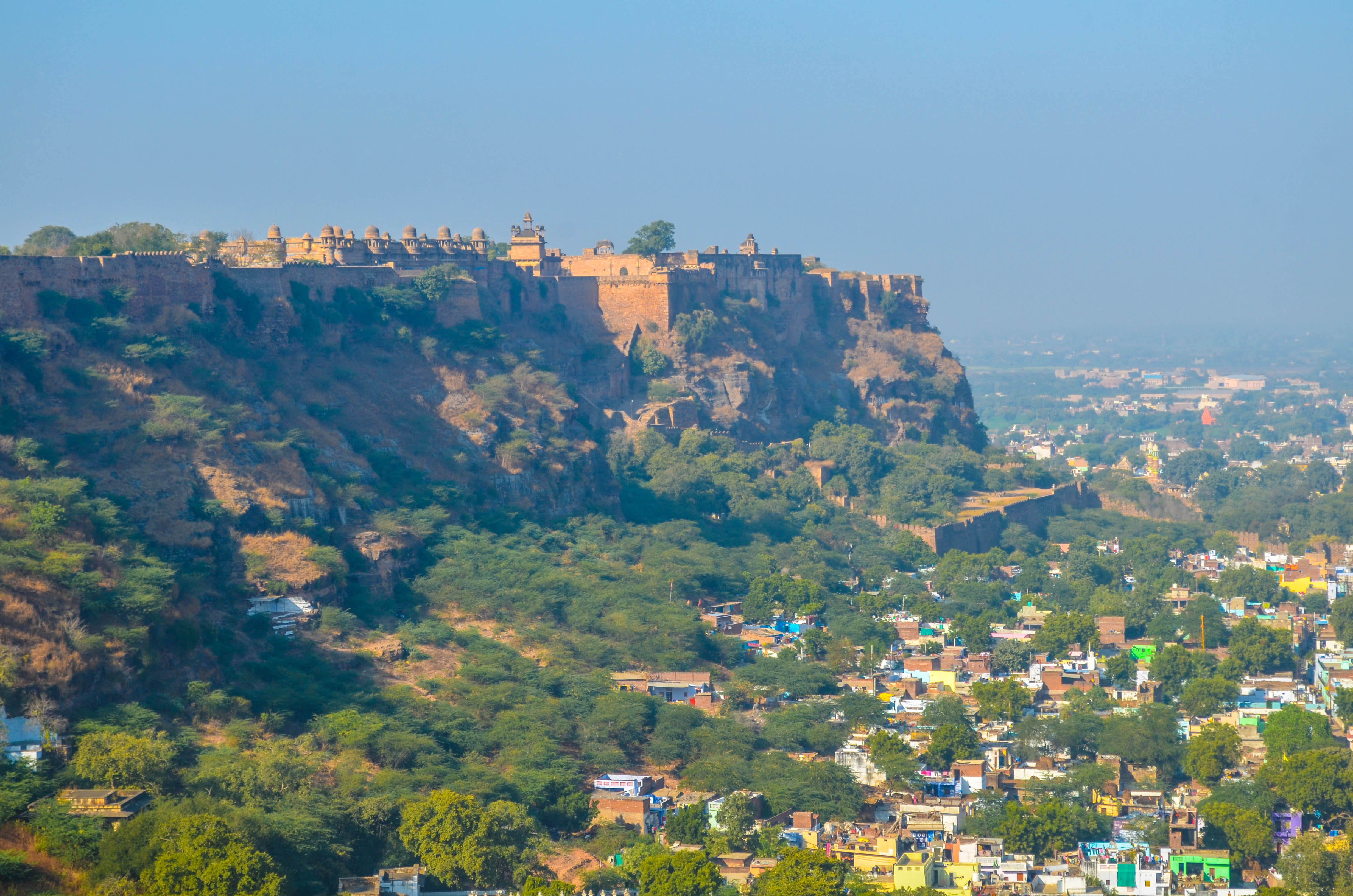




Gwalior Fort stands as a monumental testament to India's rich and complex historical tapestry, revealing layers of cultural, architectural, and political transformations across centuries. Perched dramatically atop a sandstone hill, this fortress has been a silent witness to the ebb and flow of numerous dynasties, each leaving an indelible mark on its stone walls and intricate structures.
The fort's origins trace back to an enchanting legend of healing and gratitude. According to local narratives, a saint named Gwalipa cured King Suraj Sen of leprosy using sacred water, prompting the grateful monarch to construct this formidable stronghold. This mythical foundation sets the stage for a narrative that intertwines spiritual mysticism with military prowess.
Architecturally, Gwalior Fort represents a stunning amalgamation of diverse cultural influences. Hindu, Jain, Muslim, and British architectural elements coexist within its expansive complex, creating a visual chronicle of India's multifaceted historical journey. Structures like the Teli-ka-Mandir, with its unique blend of north and south Indian architectural styles, and the Man Mandir Palace, which captivated even Mughal emperor Babur, exemplify this rich architectural heritage.
The fort's strategic significance reached its dramatic zenith during the Indian Rebellion of 1857. Here, the legendary Rani Lakshmibai of Jhansi fought her last heroic battle, embodying resistance against colonial power. Her valiant two-week struggle within these walls became a powerful symbol of Indian courage and defiance, immortalizing the fort in the national consciousness.
Beyond its military and political narratives, Gwalior Fort is a canvas of artistic expression. Intricate stone carvings, elaborate designs, and meticulous architectural details found in structures like the Saas Bahu Temples showcase the extraordinary craftsmanship of Indian artisans. Each carving, each architectural nuance tells a story of skill, devotion, and cultural sophistication.
The fort's water management system remains a marvel of ancient engineering. Legendary tanks that never run dry highlight the sophisticated technological understanding of its builders. These water systems not only served practical purposes but also became woven into local folklore, symbolizing the fort's almost mystical resilience through centuries of change.
Historical transitions marked the fort's journey through different ruling powers. From Hindu dynasties to Muslim rulers, from Maratha control to British occupation, Gwalior Fort absorbed and reflected each political transformation. Its walls have witnessed treaties, battles, cultural exchanges, and the gradual metamorphosis of Indian society.
Today, Gwalior Fort stands not just as a historical monument but as a living museum of Indian heritage. Attracting both domestic and international visitors, it offers a profound journey through time. Its strategic location, architectural splendor, and rich historical narratives continue to inspire, educate, and mesmerize those who walk its ancient pathways.
INR 75 for Indians, INR 250 for Foreigners
Interactive location view
Get directions and reviews
Relevant or related website
INR 75 for Indians, INR 250 for Foreigners
Discover more attractions within 50km that might interest you

Gwalior, Madhya Pradesh
Majestic Tomar Dynasty Palace Revealing Architectural Grandeur

Gwalior, Madhya Pradesh
Ancient Jain Rock Monuments Carved into Gwalior's Majestic Hillside

Gwalior, Madhya Pradesh
Ancient Saas Bahu Temple: Architectural Marvel of Gwalior Fort